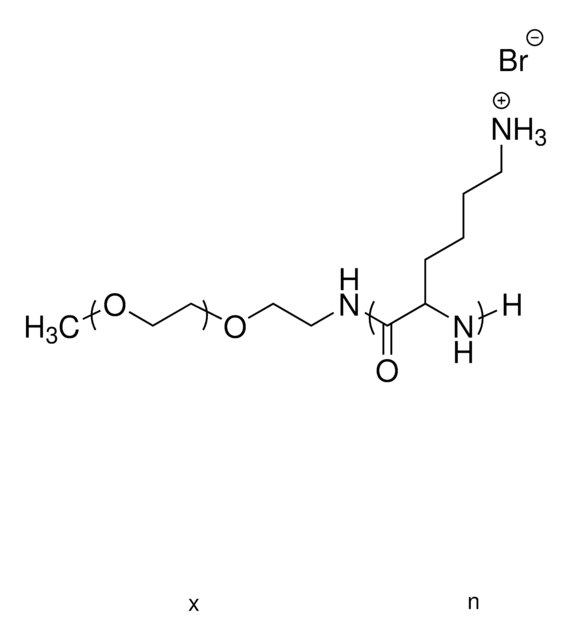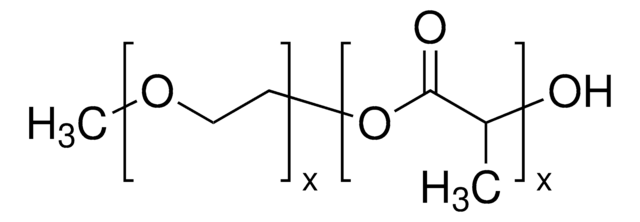937819
Methoxy-poly(ethylene glycol) amine-block-poly-L-lysine hydrobromide
PEG average Mn 2000, PLLA average Mn 5000
Sinónimos:
Block copolymer, Drug delivery polymer, Polymeric micelles, Tissue engineering, Tumor imaging, mPEG-amine2k -PLL5k, mPEGNH2-PLL (Hidden synonyms: Polymeric micelles, Block copolymer, Tumor imaging, Tissue engineering, Drug delivery polymer)
About This Item
Productos recomendados
form
chunks
Quality Level
mol wt
PEG average Mn 2000
PLLA average Mn 5000
color
white
storage temp.
2-8°C
SMILES string
COCCOCCNC(C(CCCC[NH3+])N[H])=O.[Br-]
InChI
1S/C11H25N3O3.BrH/c1-16-8-9-17-7-6-14-11(15)10(13)4-2-3-5-12;/h10H,2-9,12-13H2,1H3,(H,14,15);1H
¿Está buscando productos similares? Visita Guía de comparación de productos
General description
Application
*Targeted drug delivery application
*Protein coatings and tissue culture
Features and Benefits
*Amine functional group at the side chain enables further rapid functionalization
*Cationic poly(L-lysine) has excellent DNA and RNA condensation property
*Biodegradable, biocompatible and water soluble
Storage Class
11 - Combustible Solids
wgk_germany
WGK 3
flash_point_f
Not applicable
flash_point_c
Not applicable
Elija entre una de las versiones más recientes:
Certificados de análisis (COA)
Lo sentimos, en este momento no disponemos de COAs para este producto en línea.
Si necesita más asistencia, póngase en contacto con Atención al cliente
¿Ya tiene este producto?
Encuentre la documentación para los productos que ha comprado recientemente en la Biblioteca de documentos.
Nuestro equipo de científicos tiene experiencia en todas las áreas de investigación: Ciencias de la vida, Ciencia de los materiales, Síntesis química, Cromatografía, Analítica y muchas otras.
Póngase en contacto con el Servicio técnico








